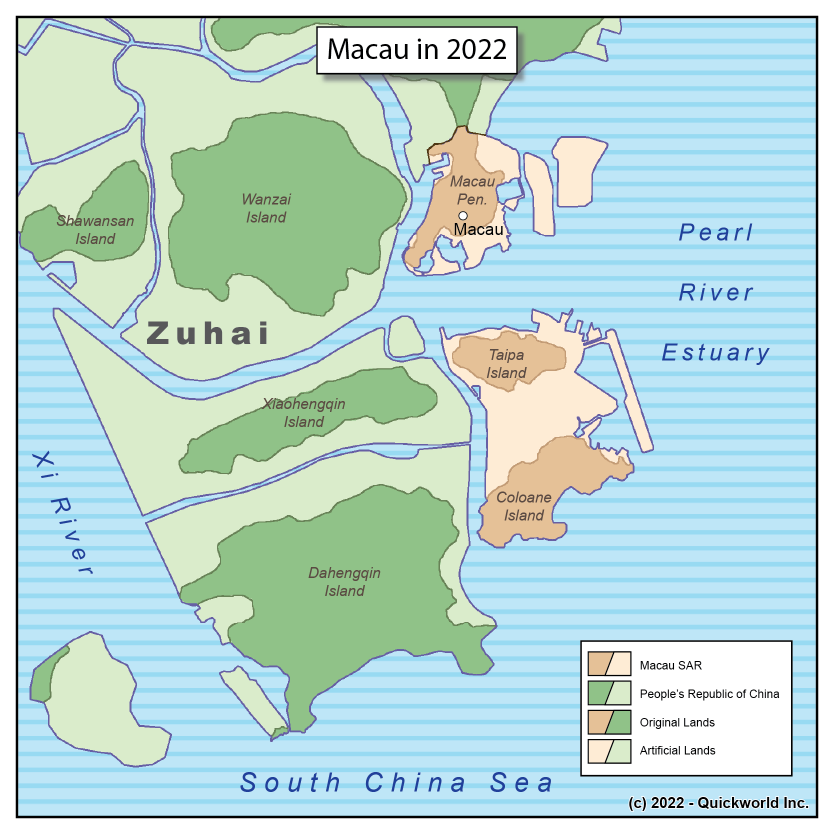Our Series on Artificial Features takes us to Macau, a special administrative region of China that has more than doubled its land area over the last few decades, through extensive reclamation projects.
Macau was initially a small peninsula in the Pearl River Delta region, which China, along with two adjacent islands, leased to Portugal as a trading post in 1557. Over time, Portugal developed Macau as a commercial port and cultural centre until its importance receded in the late 17th century. The British annexation of nearby Hong Kong Island in 1842 further reduced Macau's importance as a port, but the legalization of gambling in the 1850s made Macau a destination for all kinds of adventurers.
Land reclamations started in the 1920s. Since the return of Macau to Chinese sovereignty in 1999, the growth of the former colony as a gambling destination has fueled unprecedented growth, which extends to its vicinity. Both Macau islands and several adjacent islands of the Zhuhai prefecture are now linked to the mainland, and the Zhuhai-Macau metropolis counts over 2 million residents (700,000 in Macau), over 20 times its population a century ago.
More on Macau
Macau Artificial Lands


